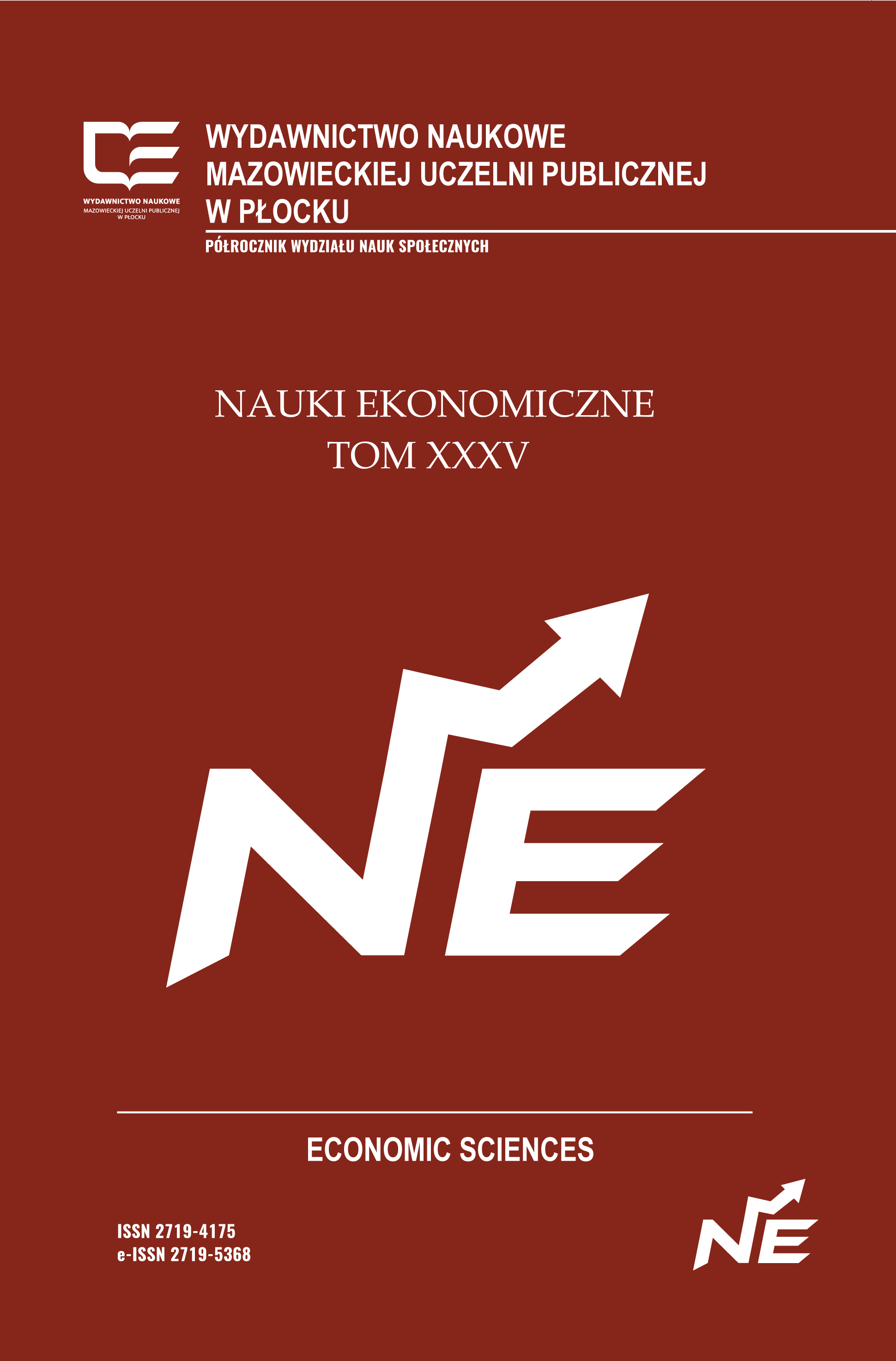THE INFLUENCE OF FOREIGN TRADE ON ECONOMIC GROWTH IN THE CONTEXT OF CONTEMPORARY ECONOMIC THEORIES AND DISCUSSIONS
DOI:
https://doi.org/10.19251/ne/2022.35(4)Keywords:
economic growth, foreign trade, theories of foreign trade, the impact of foreign trade on economic growth, international trade and the world economyAbstract
The objective aim of the article is to analyze the impact of foreign trade on economic growth through the prism of theses and hypotheses and the results of research on individual foreign trade theories. Theories of foreign trade ranging from Ricardian comparative costs to modern theories explain how it affects the level of GDP and show the benefits it brings to the country's economy and participants of exchange. The impact of foreign trade on economic growth takes place either through multiplier effects or through greater capital accumulation possibilities. This impact depends on whether there is a surplus or a shortage of savings in the country. In the case of a shortage of savings, a negative balance leads to an acceleration in the growth rate of national income. Imports, in turn, are a prerequisite for stimulating growth if the country does not have sufficiently developed own resource and technology base. Imports are an important source of technology transfer, complementing insufficient internal accumulation, and accelerating investment growth.
References
Balassa B. (1989). Comparative Advantage Trade Policy and Economic Development. Washington Square. New York: New York University Press.
Balassa B. (1964). The Purchasing-Power Parity Doctrine: A Reappraisal, The Journal of Political Economy, 72 (6).
Białecki, K. P., Dorosz, A., Wł. Januszkiewicz, Wł. (1993). Słownik Handlu Zagranicznego. Warszawa: PWE.
Budnikowski, A., Kawecka-Wyrzykowska, E. (red.). (1999). Międzynarodowe stosunki gospodarcze. Warszawa: PWE.
Cantavella-Jorde, A. (2004). New Evidence About the Spanish Export-led Growth Period (1961-2000). Castello: Department of Economics and International Economics, Institute of University Jaume I.
Chmielewski T. (2003), Znaczenie efektu Balassy-Samuelsona dla polskiej polityki pieniężnej, Materiały i Studia NBP, 163.
Cieślak, A. (2000). Nowa teoria handlu zagranicznego w świetle badań empirycznych. Warszawa: PWN.
Durlauf, S., Quah, D. (1998). The New empirics of economic growth. Cambridge: National Bureau of Economic Research.
Égert B. (2002), Estimating the impact of the Balassa-Samuelson effect on inflation and the real exchange rate during the transition, Economic Systems, 26 (1).
Égert B., Drine I., Lommatzsch K., Raut C. (2002), The Balassa-Samuelson effect in Central and Eastern Europe: Myth or reality?, William Davidson Institute Working Paper Series, 483.
Findlay, R. (1995). Factor Proportions, Trade and Growth. Cambridge, Massachusetts, London: The Massachusetts Institute of Technology Press.
Grossman, G.M. , Helpman, E. (1990). Trade Knowledge Spillovers and Growth. Cambridge: National Bureau of Economic Research, INC.
Grossman, G.M., Helpman, E. (1994). Technology and Trade. Cambridge: National Bureau of Economic Research, INC.
Halpern L., Wyplosz C. (2001), Economic Transformation and Real Exchange Rates in the 2000s: The Balassa-Samuelson Connection, ECE Discussion Paper Series, 1.
Hellwig, Z., Ostasiewicz, St., Siedlecka, U., Siedlecki, J. (1994). Studia nad rozwojem gospodarczym Polski (analizy taksonometryczne). Warszawa: IRiSS.
Helpman, E. (1991) Endogenous Macroeconomic Growth Theory. Cambridge: National Bureau of Economic Research, INC.
Iskra Wiesław. 1998. Współzależność handlu zagranicznego i wzrostu gospodarczego. Warszawa: PWSBiA.
Konopczak K., Torój A. (2010), Estimating the Baumol-Bowen and Balassa-Samuelson effects in the Polish Economy - a Disaggregated Approach, Central European Journal of Economic
Modelling and Econometrics, 2 (2).
Krueger A.O. (1978). Foreign Trade Regimes and Economic Development, w: A.O. Krueger, Liberalization Attemps and Couseqeuces , Ballinger, Cambeige (Mass).
Krugman, P.R. (1994). Rethinking International Trade. London: The Massachusetts Institute of Technology Cambridge Massachusetts.
Lojschová A. (2003), Estimating the Impact of the Balassa-Samuelson Effect in Transition Economies, Institute for Advanced Studies Vienna Economic Series, 140.
MacDonald R., Wójcik C. (2003), Catching Up: The Role of Demand, Supply and Regulated Price Effects on the Real Exchange Rates of Four Accession Countries, CESifo Working Paper Series, 899.
Misala Józef. 1990. Teorie międzynarodowej wymiany gospodarczej. Warszawa: PWN.
Narski, Z. (2001). Ekonomia w rozwoju. Historia myśli ekonomicznej. Toruń: SUSPENS.
Rymarczyk, J. (red.). (2002). Handel zagraniczny: organizacja i technika. Wrocław: Wyd. AE we Wrocławiu.
Siedlecki, J. (2000). Równowaga a wzrost gospodarczy. Warszawa-Wrocław: PWN.
Walde, K.C., Woot, C. (2005). The Empirics of Trade and Growth; where are the policy recommendations, European Commission for Economic and Financial Affairs (w:) www.europa.eu economy finance.
Woźniak, M.G. (2004). Wzrost gospodarczy. Podstawy teoretyczne. Kraków: Wyd. AE w Krakowie.
Woźniak, M.G. (2008). Wzrost gospodarczy. Podstawy teoretyczne. Kraków: Wydawnictwo Uniwersytetu Ekonomicznego w Krakowie.
